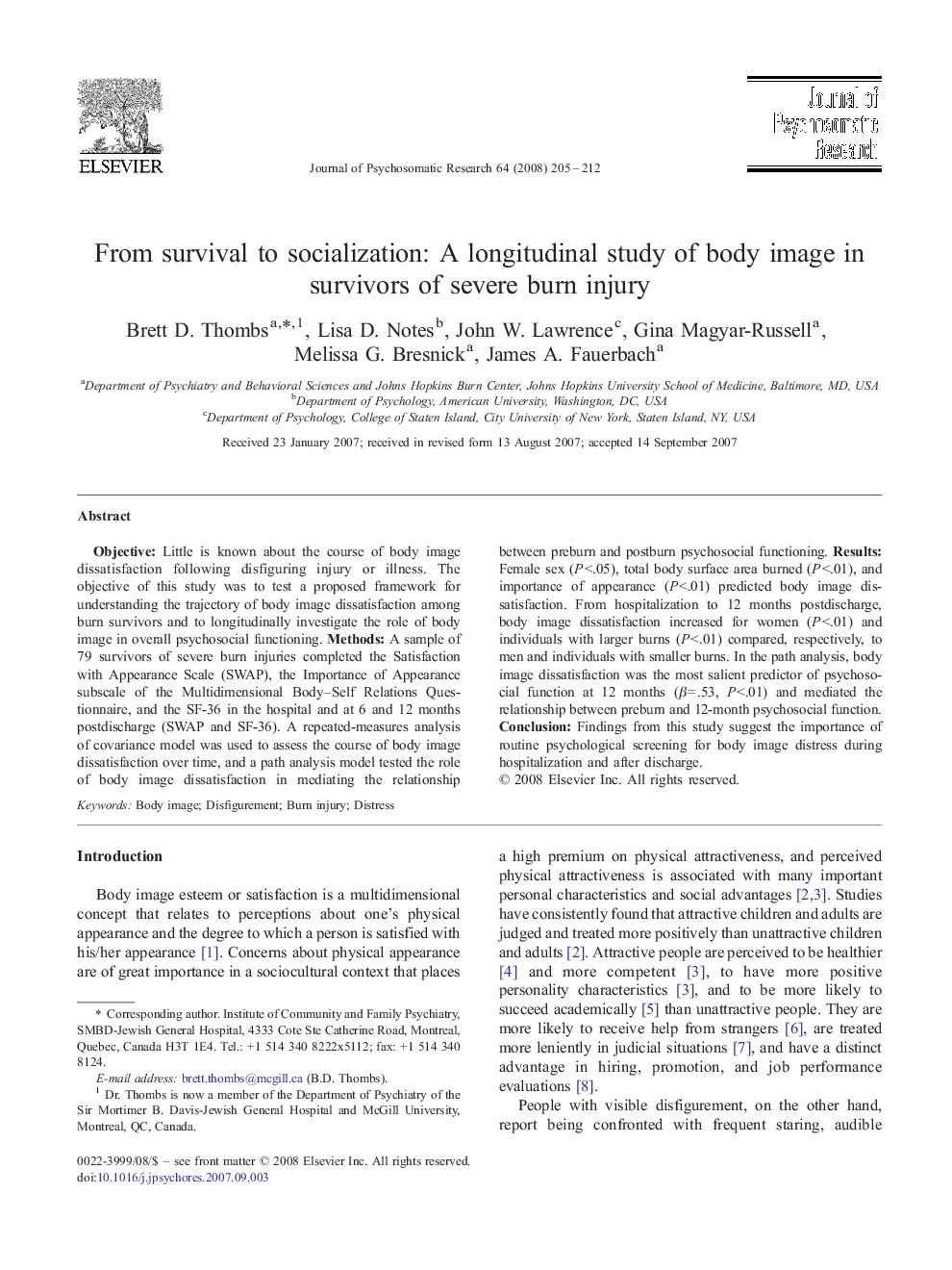| کد مقاله | کد نشریه | سال انتشار | مقاله انگلیسی | نسخه تمام متن |
|---|---|---|---|---|
| 950429 | 926823 | 2008 | 8 صفحه PDF | دانلود رایگان |

ObjectiveLittle is known about the course of body image dissatisfaction following disfiguring injury or illness. The objective of this study was to test a proposed framework for understanding the trajectory of body image dissatisfaction among burn survivors and to longitudinally investigate the role of body image in overall psychosocial functioning.MethodsA sample of 79 survivors of severe burn injuries completed the Satisfaction with Appearance Scale (SWAP), the Importance of Appearance subscale of the Multidimensional Body–Self Relations Questionnaire, and the SF-36 in the hospital and at 6 and 12 months postdischarge (SWAP and SF-36). A repeated-measures analysis of covariance model was used to assess the course of body image dissatisfaction over time, and a path analysis model tested the role of body image dissatisfaction in mediating the relationship between preburn and postburn psychosocial functioning.ResultsFemale sex (P<.05), total body surface area burned (P<.01), and importance of appearance (P<.01) predicted body image dissatisfaction. From hospitalization to 12 months postdischarge, body image dissatisfaction increased for women (P<.01) and individuals with larger burns (P<.01) compared, respectively, to men and individuals with smaller burns. In the path analysis, body image dissatisfaction was the most salient predictor of psychosocial function at 12 months (β=.53, P<.01) and mediated the relationship between preburn and 12-month psychosocial function.ConclusionFindings from this study suggest the importance of routine psychological screening for body image distress during hospitalization and after discharge.
Journal: Journal of Psychosomatic Research - Volume 64, Issue 2, February 2008, Pages 205–212